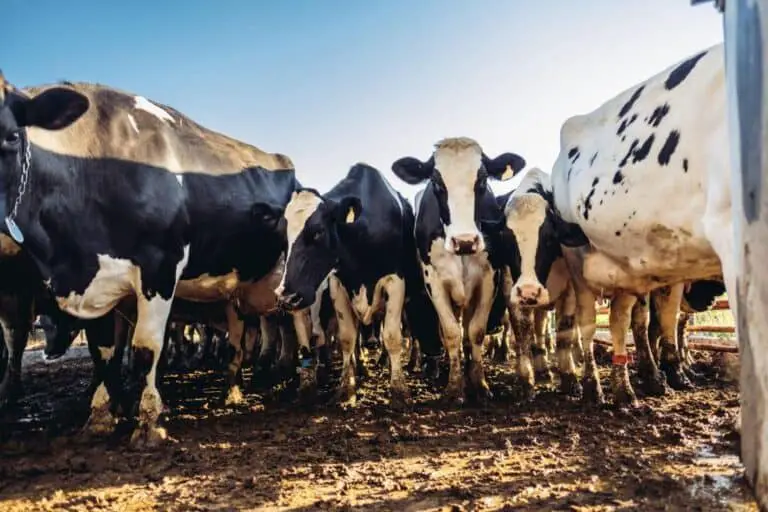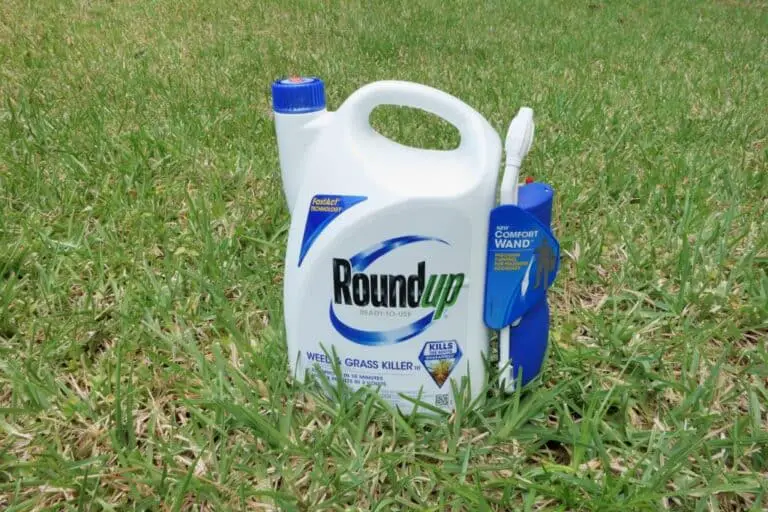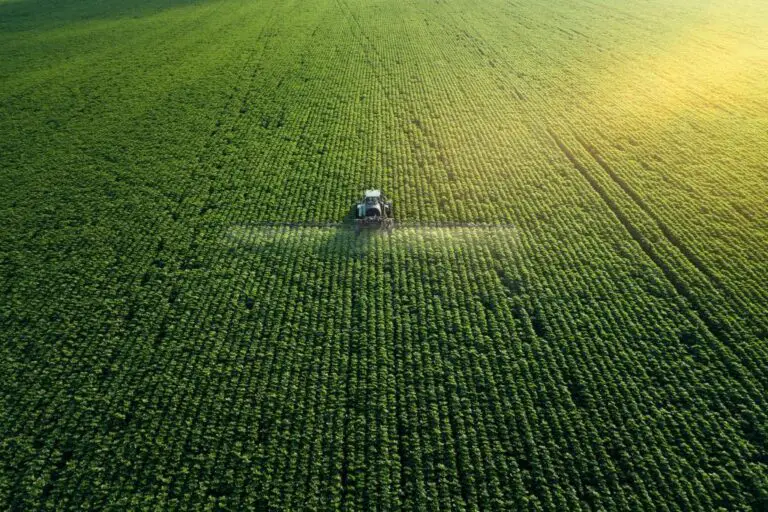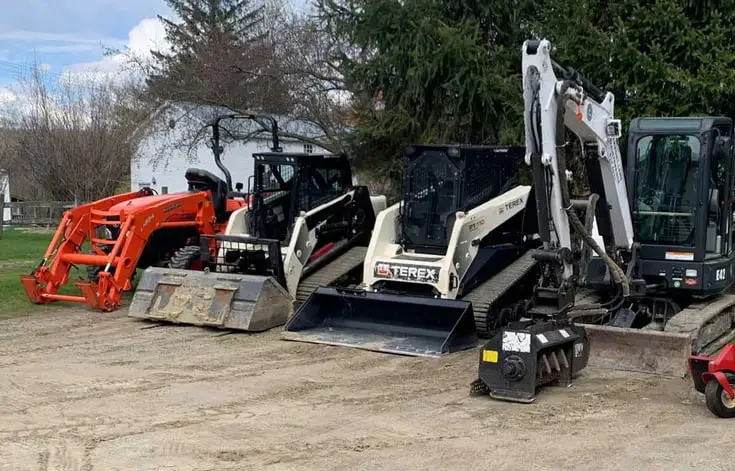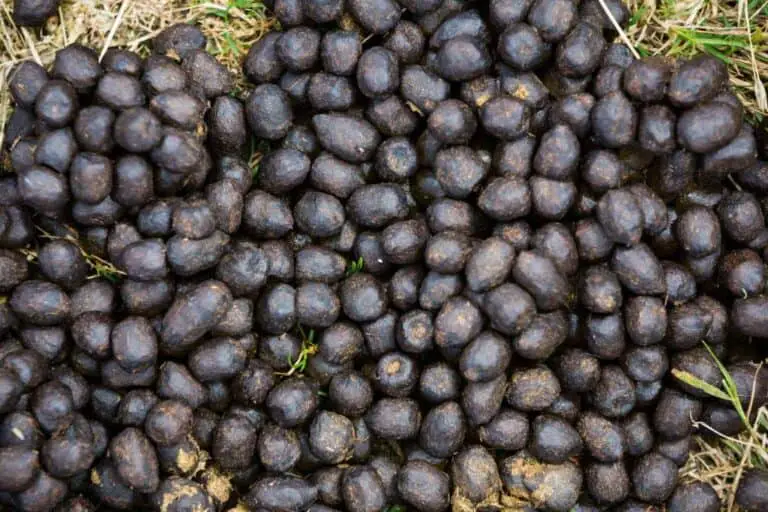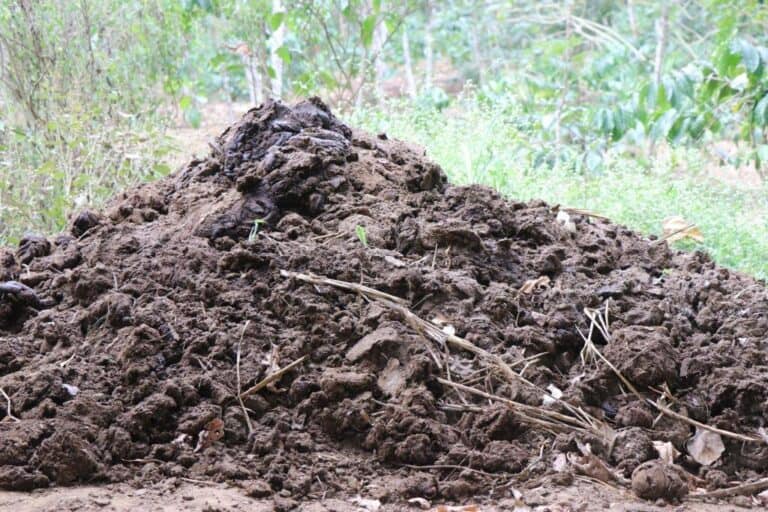Is Rocky Soil Good for Farming and Growing Crops Plants?

When it comes to farming, our minds often conjure up images of lush fields with rich, fertile soil, perfect for nurturing thriving crops. But what about those rocky terrains that seem more suitable for mountain climbing than agriculture? Is rocky soil good for farming and growing crops plants?
Rocky soil can make it difficult for certain plants to take root and absorb essential nutrients. However, rocky soil also has some benefits. Once the rocks are removed, the soil can become highly productive and provide a free supply of hardscape material.
Imagine rows of hardy plants, their roots intermingling with the rocks below, drawing sustenance from an unconventional source. Picture the sun beating down on this seemingly harsh terrain, warming the stones that will later release their stored heat, cradling delicate seedlings through cool nights. It may sound like an idyllic dream or a daunting challenge, but the truth lies somewhere between the two.
In this exploration of rocky soil’s mysteries, we’ll journey through its unique characteristics, unveil its hidden potentials, and unmask the obstacles it presents. So, fasten your seatbelt and prepare to uncover the secrets of this rocky road to farming success!
Understanding Rocky Soil
Rocky soil, as the name suggests, is characterized by an abundance of rocks, stones, and gravel mixed with soil. Geological factors like weathering, erosion, and the presence of rocky parent materials influence the formation of rocky soil. This type of soil typically has poor drainage and aeration due to the limited space for air and water movement.
Despite its challenges, rocky soil also offers unique advantages for farming and crop cultivation. Let’s delve into the characteristics and composition of rocky soil to understand its potential for agricultural use.
1. Characteristics of Rocky Soil
Rocky soil is easily identifiable by its abundance of rocks, stones, and gravel mixed with soil particles. Its formation is a result of geological processes, including weathering and erosion, which break down rocks over time. The presence of rocky parent materials also contributes to the formation of this soil type.
One of the key challenges of rocky soil lies in its poor drainage and aeration. The presence of rocks limits the space available for air and water movement, which can hinder plant root growth and nutrient uptake.
2. Composition of Rocky Soil
The composition of rocky soil varies depending on the types of rocks and parent materials present in a particular area. In some cases, rocky soil may contain a mix of larger rocks and smaller soil particles, while in others, it may be predominantly composed of smaller rocks and gravel.
The diversity of rock types influences the soil’s nutrient content, with certain rocks contributing minerals that can benefit plant growth. However, the limited organic matter in rocky soil means it may lack the fertility found in other soil types.
3. Advantages for Agriculture
Despite its challenges, rocky soil offers unique advantages for agricultural use. The rocks and stones in the soil act as natural drainage channels, preventing waterlogging during heavy rainfall. This feature can be beneficial in areas prone to flooding.
Additionally, the rocks help retain heat, creating a warmer microclimate that can extend the growing season in colder regions. Farmers can also harness the rocks’ potential by using them as natural barriers or to construct terraces. Terrace farming prevents soil erosion on sloped terrain.
The Pros of Rocky Soil for Farming

While rocky soil might seem like a challenging landscape for farming, it presents a silver lining that savvy farmers can harness to their advantage. Let’s unravel the unique benefits that rocky soil brings to the table, offering opportunities for resilient and resourceful cultivation.
1. Excellent Drainage
One of the key benefits of rocky soil is its superior drainage capabilities. Unlike dense clay soil that tends to retain water and become waterlogged, rocky soil allows excess water to drain away swiftly. This means that during heavy rainfall or irrigation, plants are less likely to suffer from root rot or other water-related issues.
2. Heat Retention
Rocky soil has a unique ability to absorb and retain heat from the sun. The rocks act as natural thermal mass, absorbing heat during the day and releasing it at night. This can be particularly advantageous in cooler climates or during the early spring, when temperatures can fluctuate significantly. The retained heat can protect delicate plants from frost and encourage earlier growth.
3. Reduced Erosion
While rocky soil may be the result of erosive forces, it can also play a role in mitigating further erosion. The rocks and stones act as a protective layer, shielding the soil beneath from direct impact during heavy rains. This layer helps prevent valuable topsoil from being washed away, preserving nutrients and providing a more stable environment for plant roots.
4. Weed Suppression
Weeds can be the bane of a farmer’s existence, robbing crops of essential nutrients and stunting their growth. Fortunately, rocky soil can assist in weed suppression. The rocky surface makes it difficult for weed seeds to make direct contact with the soil, reducing their germination rates. Additionally, the limited space between rocks makes it challenging for weeds to establish strong root systems, further curbing their growth.
5. Low Compaction Risks
Unlike other soil types, rocky soil carries a reduced risk of compaction. The presence of rocks limits the soil’s susceptibility to compaction caused by external pressures, such as equipment and foot traffic. This attribute makes the soil structure relatively loose and provides ample space for air and water movement, creating an environment where roots can flourish.
The Cons of Rocky Soil for Growing Crops Plants
1. Poor Nutrient Retention
While rocky soil excels at drainage, it often lacks the ability to retain nutrients effectively. Fertile soil with a high organic matter content acts like a sponge, holding onto essential nutrients and gradually releasing them to plants. In contrast, rocky soil tends to have lower organic matter, making it less adept at nutrient retention.
To compensate for this, farmers may need to incorporate organic matter through composting or use fertilizers to ensure an adequate nutrient supply for their crops.
2. Limited Water Retention
Although excellent drainage can be an advantage, rocky soil’s downside is its limited capacity to hold water. During dry periods or droughts, this can become a significant challenge, as plants may struggle to access enough water for optimal growth. Implementing irrigation systems or selecting drought-resistant crops can help overcome this limitation.
3. Challenging to Cultivate
The presence of rocks and stones in the soil can make tilling and cultivating a more labor-intensive task. Machinery may be less effective in rocky terrain, and the rocks themselves can potentially damage equipment. Farmers working with rocky soil may need to employ alternative cultivation methods or choose crops that are more suitable for such conditions.
4. Root Growth Impediment
For some crops that require deep root penetration, rocky soil can pose an obstacle. The rocks can restrict root growth and prevent plants from accessing deeper water and nutrients. Careful crop selection is vital to ensuring that the chosen plants can adapt to the shallow soil environment.
Farming Strategies for Rocky Soil
Although rocky soil presents its fair share of challenges, with thoughtful planning and the right approach, it can be transformed into fertile ground for successful farming. Here are some strategies to make the most of rocky soil:
1. Raised Bed Cultivation
Utilizing raised beds can be an effective way to create suitable growing conditions for plants in rocky soil. By filling the beds with a mixture of soil, compost, and organic matter, farmers can provide crops with a more nutrient-rich and well-draining environment.
2. Selecting Resilient Crops
Certain crops have evolved to thrive in rocky or arid conditions. Identifying and cultivating these resilient varieties can increase the chances of a successful harvest. Crops like cacti, succulents, and certain herbs can adapt well to rocky soil.
3. Mulching
Applying mulch to the soil surface can help conserve moisture, suppress weed growth, and gradually enrich the soil with organic matter as the mulch breaks down. This practice is particularly valuable in rocky soil, where moisture retention may be a challenge.
4. Terracing or Contour
For sloped, rocky terrain, terracing can be a viable solution. By creating level platforms along the slope, farmers can minimize erosion, improve water retention, and create more manageable planting areas.
5. No-Till Farming
Implementing a no-till farming approach can be beneficial for rocky soil. This technique involves minimal disruption of the soil by avoiding plowing or tilling, which helps maintain soil structure and reduce erosion. No-till farming rocky soil also promotes the growth of beneficial soil organisms.
6. Cover Crops
Sowing cover crops such as clover, rye, or vetch can serve multiple purposes in rocky soil. Cover crops help prevent soil erosion, improve soil fertility by fixing nitrogen, and enhance overall soil health. They also provide a protective layer during harsh weather conditions.
7. Crop Rotation
Practicing crop rotation involves alternating the types of crops planted in specific areas over different growing seasons. This strategy can help break pest and disease cycles, prevent soil nutrient depletion, and improve soil structure. Crop rotation can be particularly advantageous in rocky soils where nutrient availability might be limited.
8. Drip Irrigation
Installing drip irrigation systems can ensure efficient water delivery to plants’ root zones in rocky soil. By directly targeting the plants, this technique minimizes water waste and lowers the possibility of soil erosion due to surface runoff.
Do Certain Plants Perform Better in Rocky Soil Conditions?
Indeed, certain plants have evolved to flourish in rocky soil conditions, showcasing their resilience and adaptability. Drought-resistant crops take center stage in this environment, making it possible to create thriving gardens even in challenging terrain.
1. Cacti
Cacti are renowned for their ability to thrive in arid conditions, making them a perfect fit for rocky soil. Their succulent stems store water, allowing them to withstand extended periods of drought. In rocky terrains with limited water availability, cacti are not only survivors but also ornamental additions, adding unique shapes and colors to the landscape.
2. Succulents
Like cacti, succulents are masters of water conservation. Their fleshy leaves retain moisture, ensuring their survival in rocky soils with sparse rainfall. With a vast array of shapes and sizes, succulents bring visual diversity to rocky landscapes while requiring minimal maintenance.
3. Certain Herbs
Certain herbs, too, have the fortitude to thrive in rocky soil conditions. Herbs like thyme, rosemary, and lavender are well-suited for these environments, exhibiting impressive adaptability to poor-nutrient soils. They not only bring aromatic delights but also attract pollinators, enriching the biodiversity of rocky gardens.
Conclusion
In conclusion, while rocky soil may not be the most conducive environment for traditional farming, it certainly has its merits and can be leveraged to grow crops and plants successfully. Its excellent drainage, heat retention, and erosion-reducing properties are valuable assets. However, it does require careful planning and adaptation to overcome challenges such as nutrient and water retention limitations.
Rocky soil, often deemed inhospitable, reveals a realm of advantages for the discerning farmer. Its innate erosion control capabilities stand as a silent sentinel against the forces of nature, safeguarding the fertile layers beneath. The warmth-retaining properties of rocks extend growing seasons, inviting a variety of crops to flourish in their nurturing embrace. Moreover, the reduced risk of soil compaction in rocky soil preserves the essential air and water channels that roots require to thrive.
However, rocky soil also presents its share of challenges. Root penetration and anchoring can be a struggle, requiring plants to adapt and establish themselves amidst the rocky terrain. Ensuring adequate nutrient availability becomes a concerted effort, as rocky soil’s composition may hinder natural nutrient cycling. Yet, these challenges are not insurmountable, and through strategic planning and tailored techniques, rocky soil can be transformed into a fertile canvas for cultivation.
For those venturing into the world of rocky soil farming, adherence to best practices becomes paramount. Planting deeper to encourage root exploration, amending soil with organic matter to improve nutrient retention, and utilizing slow-release fertilizers to address nutrient deficiencies are strategies that can tip the scales in favor of successful crop growth.
Through employing suitable farming strategies like raised bed cultivation, crop selection, mulching, and terracing, farmers can unlock the potential of rocky soil and turn it into a productive and sustainable agricultural space. With dedication and innovation, rocky soil can yield surprising rewards for those willing to work with nature’s unique offerings. So, if you find yourself with rocky soil on your property, embrace the opportunity, and let your farm thrive amidst the stones and pebbles.
FAQs on Best Practices for Planting in Rocky Soil Conditions
How do you improve rocky soil for farming?
Improving rocky soil involves adding organic matter like compost to enhance nutrient content and water retention. Creating raised beds with amended soil can offer a more favorable growing environment. Additionally, using mulch helps conserve moisture and gradually enrich the soil.
Can you use raised beds for growing crops in rocky areas?
Yes, raised beds are an excellent solution for growing crops in rocky areas. They allow farmers to control the soil composition and create a suitable environment for plants. Adding nutrient-rich soil to raised beds enhances plant growth and minimizes the impact of rocky terrain.
What are some alternative farming techniques for rocky soil?
Terracing is an effective technique for farming on sloped rocky land. It prevents erosion, improves water retention, and creates flat planting areas. Cultivating resilient crops like cacti and succulents, which thrive in rocky soil, is another alternative approach.
Is it possible to grow crops on rocky soil?
Yes, it is possible to grow crops in rocky soil, but it requires careful planning and adaptation. By selecting suitable crops, implementing raised beds, and using appropriate farming techniques, farmers can successfully cultivate crops in rocky areas.
How can I prevent erosion on my rocky land?
To prevent erosion, consider terracing the land to create flat platforms. This method reduces the impact of rainfall on the soil. Additionally, planting cover crops or using mulch helps stabilize the soil and minimizes erosion risk.
Are there any specific tools or equipment designed for farming in rocky terrain?
While there are no specific tools exclusively for rocky terrain, using durable equipment is essential to withstand potential damage from rocks and stones. Adjustable tilling and cultivation tools may be helpful in rocky soil to avoid unnecessary obstacles.

